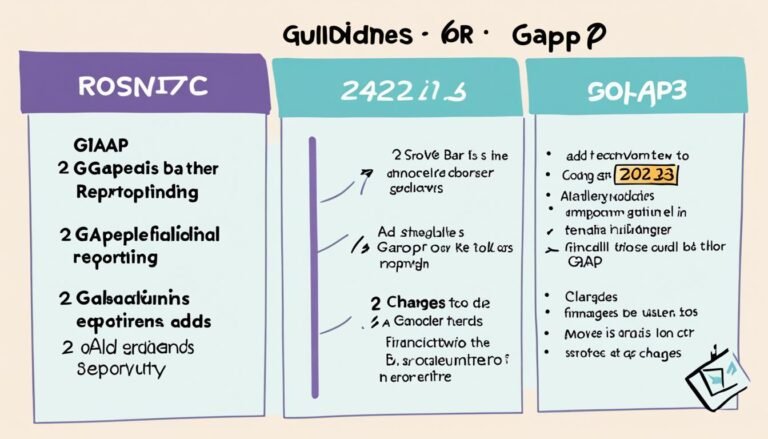AML Regulations: Stay Compliant & Informed
Did you know that financial institutions worldwide lose an estimated $1.45 trillion annually to money laundering?
Money laundering is a global issue that undermines the integrity of the financial system and enables criminal activities such as drug trafficking, terrorism financing, and corruption. To combat this growing problem, governments and regulatory bodies have implemented Anti-Money Laundering (AML) regulations to ensure financial institutions have robust compliance programs in place.
In this article, we will explore the importance of AML regulations, the compliance requirements for financial institutions, and the regulatory framework that governs them. By understanding and adhering to these regulations, institutions can protect themselves and contribute to the global fight against financial crimes.
Key Takeaways:
- AML regulations are crucial for preventing money laundering and financial crimes.
- Financial institutions must develop and implement AML compliance programs.
- Compliance programs should include policies, procedures, training, and customer due diligence.
- All broker-dealers are subject to the Bank Secrecy Act and must have AML compliance programs.
- Compliance personnel do not need to be registered with FINRA unless performing a registered function.
What is an AML Compliance Program required to have?
An AML compliance program is an essential requirement for financial institutions to prevent money laundering and comply with the law. To meet the requirements set forth by the Bank Secrecy Act and FINRA Rule 3310, an effective AML compliance program must have the following key components:
- Policies and Procedures: The program should include written policies and procedures that outline the processes and measures to detect and report suspicious transactions. These policies must align with the regulatory framework and establish a strong foundation for compliance efforts.
- Internal Controls: Adequate internal controls are crucial to ensure compliance with AML regulations. These controls should be designed to monitor and mitigate risks related to money laundering and illicit activities. They help in identifying and addressing any gaps or vulnerabilities in the system.
- Annual Independent Testing: Regular independent testing is necessary to evaluate the effectiveness of the AML compliance program. This testing ensures that the program is properly implemented, identifies any weaknesses, and provides recommendations for improvement.
- Designated Compliance Personnel: It is important to have designated individuals responsible for overseeing the AML compliance program. These individuals should possess the necessary knowledge and expertise to effectively manage and monitor compliance efforts.
- Ongoing Training: Continuous training is crucial for the success of an AML compliance program. It helps employees stay updated on the latest regulations, trends, and best practices, enabling them to identify and prevent potential money laundering activities.
- Risk-Based Procedures for Customer Due Diligence: Customer due diligence is a critical aspect of AML compliance. The program should include risk-based procedures for verifying the identity of customers and assessing the level of risk associated with their transactions.
By incorporating these components into their AML compliance programs, financial institutions can establish a robust framework to combat money laundering and ensure compliance with the Bank Secrecy Act and FINRA Rule 3310.
Are all broker-dealers subject to the Bank Secrecy Act?
Yes, all broker-dealers are subject to the Bank Secrecy Act (BSA) and must develop and implement AML compliance programs. These programs are essential to ensure that broker-dealers adhere to the regulations and requirements set forth by the BSA. By implementing robust AML compliance programs, broker-dealers can effectively detect and prevent money laundering and other illicit activities within their operations.
A broker-dealer’s AML compliance program should be tailored to their specific business and risks. Factors such as the size of the firm, location, business activities, types of accounts, and types of transactions should be considered when designing the program. A comprehensive and well-executed AML compliance program enables broker-dealers to effectively manage risks, investigate and report suspicious activities, and maintain regulatory compliance.
Under the BSA, broker-dealers are required to establish policies and procedures that promote the detection and reporting of suspicious transactions. These policies and procedures should include:
- Risk-based customer due diligence procedures
- Customer identification and verification processes
- Monitoring of customer transactions and account activity
- Recordkeeping of transactions and supporting documentation
- Training programs for employees to ensure AML awareness and compliance
By implementing these measures, broker-dealers can strengthen their AML compliance programs and contribute to a more secure and transparent financial system.
Does the AML compliance person have to be a registered principal?
The designation of an AML compliance person does not require registration with FINRA. However, compliance personnel are required to be registered if they are performing a function that expressly requires registration. Some firms may choose to register their designated AML compliance person, but it is not a requirement under the Bank Secrecy Act or FINRA Rule 3310.
| Registered Principal | AML Compliance Person |
|---|---|
| Registered with FINRA | Does not require registration |
| May perform various functions | Required to perform compliance-specific functions |
| Responsibilities may vary | Specific responsibilities for AML compliance |
What information do members have to provide regarding their AML compliance person?
When it comes to AML compliance, members are required to provide specific contact information about their designated AML compliance person to FINRA. This information includes:
- Name
- Title
- Mailing address
- Email address
- Telephone number
- Facsimile number
According to FINRA Rule 4517, it is important to promptly update this contact information and review and verify any changes within specific timeframes.
Here is an example of how the information could be provided:
| Name | Title | Mailing Address | Email Address | Telephone Number | Facsimile Number |
|---|---|---|---|---|---|
| John Smith | AML Compliance Officer | 123 Main Street, City, State, ZIP | john.smith@example.com | (123) 456-7890 | (123) 456-7890 |
Have the customer identification requirements for opening a DVP account been established?
When opening a DVP account or any new account, customers are subject to customer identification requirements. These requirements are in place to ensure compliance with anti-money laundering (AML) regulations and prevent financial crimes.
Firms have the responsibility to verify the identity of their customers using either documentary or non-documentary methods. Documentary methods may involve obtaining and reviewing official identification documents such as a passport or driver’s license. Non-documentary methods include using technology or other reliable sources to verify the customer’s identity.
In addition to customer identification, firms are required to conduct enhanced due diligence on DVP accounts. This means they must gather additional information about the beneficial owners of the accounts to ensure transparency and mitigate the risk of money laundering or other illicit activities.
The Importance of AML Screening
AML screening is a crucial aspect of the customer identification process. Firms need to implement robust AML screening programs that gather data from diverse sources. These programs aim to identify any associations between customers and money laundering, terrorist financing, or other financial crimes.
“AML screening programs are instrumental in safeguarding the integrity of the financial system and protecting against illicit activities.”
By conducting AML screening, firms can detect and prevent illicit transactions, ensuring compliance with regulations and maintaining trust among customers and stakeholders.
Sample Table: Comparison of Customer Identification Requirements
| Customer Identification Requirements | DVP Account | Other Accounts |
|---|---|---|
| Verification Methods | Documentary or non-documentary | Documentary or non-documentary |
| Enhanced Due Diligence | Required | May be required based on risk assessment |
| Beneficial Ownership | Additional information required | May be required based on risk assessment |
The table above provides a comparison of customer identification requirements for opening a DVP account and other types of accounts. It highlights the need for enhanced due diligence and additional information on beneficial ownership in the case of DVP accounts.
Ensuring compliance with customer identification requirements and implementing effective AML screening programs are crucial steps for financial institutions to mitigate the risk of financial crimes and maintain the integrity of the financial system.
What are the CIP rule’s recordkeeping requirements?
To comply with the Customer Identification Program (CIP) rule, firms must maintain records of all information obtained to verify a customer’s identity. These records should include a description of the documents used for verification, any identification numbers, place of issuance, and the methods used for non-documentary verification.
Record retention is required for five years after the account is closed, and records must be maintained in accordance with SEC Rule 17a-4.
| Recordkeeping Requirements | Description |
|---|---|
| Verification Documentation | Records of documents used for verifying customer identity, such as driver’s licenses, passports, or government-issued IDs. |
| Identification Numbers | Any identification numbers associated with the verification documents, such as social security numbers or driver’s license numbers. |
| Place of Issuance | The place where the identification documents were issued, such as the state or country. |
| Non-Documentary Verification Methods | Details of any alternative methods used for verifying customer identity, such as customer interviews or credit reports. |
It is crucial for firms to maintain these records accurately and securely to ensure compliance with the CIP rule and facilitate regulatory examinations. By keeping detailed records of customer identification, financial institutions can effectively mitigate the risk of money laundering and other illicit activities.
How is “account” defined in the CIP rule?
Under the Customer Identification Program (CIP) rule, an “account” is defined as a formal relationship established for transactions in securities. This encompasses various activities, including the purchase or sale of securities, securities loaned and borrowed, and the holding of securities or other assets. The definition of an account is essential in determining the scope and applicability of the CIP requirements for financial institutions.
When a customer establishes a formal relationship with a financial institution to engage in securities-related transactions, the CIP rule mandates that the institution must institute a process to verify the customer’s identity. This process includes obtaining certain identifying information and performing risk-based procedures to corroborate the customer’s identity.
The CIP rule further clarifies that accounts acquired through acquisitions or mergers, as well as accounts opened for employee benefit plans under the Employee Retirement Income Security Act of 1974, are excluded from the CIP requirements. These exclusions are necessary to provide clarity and avoid duplicative or burdensome compliance obligations for certain types of accounts.
Overall, the CIP rule’s definition of an account ensures that financial institutions appropriately identify and verify the identities of customers involved in securities transactions, mitigating the risk of money laundering and illicit activities within the formal relationships established in the financial system.
| Key Points | Implications |
|---|---|
| The CIP rule defines an “account” as a formal relationship for transactions in securities. | This includes activities such as buying or selling securities and holding securities or other assets. |
| Accounts acquired through acquisitions or mergers are excluded from the CIP requirements. | This ensures that certain accounts do not face duplicative compliance obligations. |
| Accounts opened for employee benefit plans under ERISA are also excluded from the CIP requirements. | This provides exemptions for accounts related to employee benefit plans. |
Why AML compliance is important?
AML compliance is an essential aspect of financial institutions’ operations. It plays a critical role in preventing money laundering and financial crimes, safeguarding the integrity of the financial system. By adhering to AML regulations, institutions can effectively hinder the proceeds of various illegal activities, such as corruption, tax evasion, theft, and fraud.
Compliance with AML regulations is more than just a legal requirement; it is a fundamental necessity for a fair and functioning society. Financial institutions that prioritize AML compliance contribute to the overall safety and stability of the financial ecosystem, fostering trust among stakeholders and protecting the interests of individuals and businesses alike.
“AML compliance acts as a powerful deterrent against financial crime, making it harder for criminals to exploit the financial system for their nefarious activities.”
By implementing robust AML compliance programs, institutions can effectively detect, prevent, and report suspicious transactions. These programs include comprehensive policies, robust internal controls, independent testing, designated compliance personnel, ongoing training, and risk-based procedures for customer due diligence. These measures collectively create a strong framework to mitigate the risks associated with money laundering and financial crimes.
Financial institutions can also benefit from AML compliance in various ways. By maintaining a strong compliance culture and reputation, they can attract and retain customers, secure partnerships with other institutions, and enhance investor confidence. Additionally, complying with AML regulations helps financial institutions avoid severe penalties, legal consequences, and damage to their brand image due to non-compliance.
A commitment to AML compliance goes beyond mere compliance with regulations; it demonstrates a commitment to upholding ethical standards and preventing illicit activities. It reflects an institution’s dedication to being a responsible corporate citizen and a trusted member of the financial community.
Benefits of AML Compliance:
- Effective prevention of money laundering and financial crimes
- Enhanced reputation and stakeholder trust
- Reduced risk of penalties and legal consequences
- Improved customer acquisition and retention
- Strengthened partnerships and collaborations
| Key Points | Benefits |
|---|---|
| Prevents money laundering and financial crimes | Ensures the integrity of the financial system |
| Upholds ethical standards | Enhances reputation and stakeholder trust |
| Protects institutions from penalties and legal consequences | Attracts customers and improves retention |
| Facilitates partnerships and collaborations | Demonstrates commitment to corporate responsibility |
Written policies
When it comes to AML compliance, the implementation of well-crafted written policies is of utmost importance. These policies serve as a roadmap for financial institutions, outlining the necessary steps and procedures to ensure compliance with AML regulations.
An effective set of written policies should encompass various areas of AML compliance, including identification procedures, report creation, record retention, compliance with regulations, and communication procedures.
Identification policies within the written policies should define the processes and requirements for verifying the identity of customers. This includes methods for customer due diligence, such as Know Your Customer (KYC), to establish the true identity of individuals and organizations. By implementing robust identification policies, institutions can mitigate the risk of money laundering and the financing of illegal activities.
Record retention policies are another crucial component of written policies. Financial institutions must retain all relevant records pertaining to AML compliance for a specified period. This ensures that documentation is readily available for internal purposes or regulatory inspections. The length of record retention can vary depending on jurisdiction, but five years is a commonly accepted standard.
By having clearly defined record retention policies, institutions can ensure compliance with regulatory requirements, maintain accurate documentation, and facilitate efficient audits or investigations.
Compliance with regulations is the cornerstone of AML efforts. Written policies should provide detailed guidelines on how to comply with specific AML regulations relevant to the institution. These guidelines should outline the necessary steps, documentation requirements, and reporting obligations to meet regulatory expectations. By incorporating regulatory compliance into written policies, institutions can proactively manage their AML obligations.
Communication procedures should also be defined within the written policies. These procedures ensure that relevant AML information is effectively shared among executives, staff, and regulators. Clear communication channels are vital for the dissemination of AML updates, training materials, and alerts regarding suspicious activities or emerging risks.
Overall, well-crafted written policies establish a solid foundation for AML compliance within financial institutions. They provide clarity, guidance, and consistency in processes related to identification, record retention, compliance with regulations, and communication. Having comprehensive written policies in place demonstrates a commitment to AML compliance and strengthens an institution’s ability to detect, prevent, and report money laundering activities.
Key Elements of AML Written Policies
| Policy Area | Description |
|---|---|
| Identification Procedures | Clearly defined processes for verifying the identity of customers, including Know Your Customer (KYC) measures. |
| Report Creation | Requirements for creating and maintaining reports related to suspicious activities, transaction monitoring, and customer due diligence. |
| Record Retention | Policies outlining the retention period for AML-related records and specifications for proper storage and retrieval. |
| Compliance with Regulations | Guidelines for complying with specific AML regulations and reporting obligations, tailored to the institution’s jurisdiction and business activities. |
| Communication Procedures | Procedures for effective communication of AML updates, training materials, and suspicious activity reports among relevant parties. |
Compliance Officer
A designated Compliance Officer is responsible for overseeing the AML compliance program. This senior-level individual plays a critical role in ensuring that the organization operates within the boundaries of the AML regulations and maintains a strong culture of compliance.
“The Compliance Officer must have the authority to enforce policies and procedures, influence decision-making processes, and implement necessary changes to enhance the effectiveness of the AML compliance program,” says Sarah Johnson, a renowned compliance expert.
The role of the Compliance Officer includes:
- Ensuring that appropriate policies and procedures are in place to identify and mitigate the risk of money laundering and terrorist financing.
- Monitoring the effectiveness of the AML compliance program and making necessary adjustments to address emerging risks and industry best practices.
- Overseeing the reporting of suspicious transactions to the relevant authorities, such as the Financial Crimes Enforcement Network (FinCEN).
- Collaborating with senior management and internal stakeholders to promote a culture of compliance throughout the organization.
- Providing guidance and training to employees on AML requirements, controls, and reporting obligations.
In addition, the Compliance Officer should possess strong analytical skills, attention to detail, and a sound understanding of the organization’s business operations. This ensures the implementation of effective AML processes and the ability to recognize suspicious activities.
By appointing a dedicated Compliance Officer, organizations can demonstrate their commitment to combatting money laundering, protecting their reputation, and prioritizing compliance with AML regulations and best practices.
| Role of Compliance Officer | Responsibilities |
|---|---|
| Policy and Procedure Oversight | Ensuring the development, implementation, and maintenance of policies and procedures that comply with AML regulations. |
| Risk Monitoring and Assessment | Continuously monitoring and assessing the organization’s risk exposure to money laundering and terrorist financing. |
| Suspicious Activity Reporting | Overseeing the timely and accurate reporting of suspicious transactions to the appropriate regulatory authorities. |
| Training and Education | Providing training and education to employees on AML requirements, recognizing red flags, and reporting obligations. |
| Internal and External Compliance | Collaborating with internal stakeholders and regulators to ensure compliance with AML laws and regulations. |
Conclusion
The importance of AML compliance cannot be overstated for financial institutions. AML regulations are essential in maintaining the integrity of the financial system and preventing money laundering and other financial crimes. To comply with these regulations, financial institutions must establish robust AML compliance programs that include comprehensive policies and procedures.
Compliance requirements encompass conducting thorough customer due diligence, monitoring transactions for suspicious activities, and maintaining proper recordkeeping. By implementing effective AML compliance programs, financial institutions can detect and report suspicious transactions, mitigate risks, and contribute to a safer financial environment.
Staying informed and proactive in AML compliance is crucial in today’s rapidly evolving financial landscape. Financial institutions must remain up-to-date on AML regulations, develop a deep understanding of the compliance requirements, and regularly train employees to maintain a culture of compliance throughout the organization. By doing so, they can mitigate the risk of financial crimes, protect their reputation, and ensure regulatory compliance.







